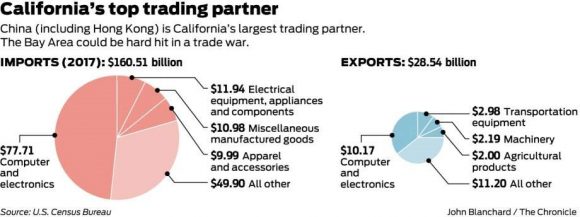
Thanks to China's "one child only" policy adopted 30 years ago, and a cultural preference for children who grow up to become family safety nets, there are now 32 million more boys under the age of 20 than there are girls.
Large-scale interference with the natural male:female ratio has been tracked with some fascination by demographers for years and is constantly generating unintended consequences.
Until early in the last century, starving rural mothers abandoned unwanted female newborns in the hills to be taken away by "spirits."
Today, pregnant women resort to the modern day equivalent by getting ultrasounds and undergoing abortions when they learn they are carrying girls.
Millions of children are "little emperors," spoiled male-only children who have been raised to expect the world to revolve around them.
The resulting shortage of women has led to an epidemic of "bride kidnapping" in surrounding countries. Stealing of male children is widespread in Vietnam, Cambodia, Laos, and Mongolia.
The end result has been a barbell-shaped demographic curve unlike that seen in any other country.
The Beijing government says the program has succeeded in bringing the fertility rate from 3.0 down to 1.8, well below the 2.1 replacement rate.
As a result, the Middle Kingdom's population today is only 1.2 billion instead of the 1.6 billion it would have been.
Political scientists have long speculated that an excess of young men would lead to more bellicose foreign policies by the Middle Kingdom.
But so far the choice has been for commerce, to the detriment of America's trade balance and Internet security.
In practice, the one-child policy was only applied to those who live in cities or had government jobs. That is about two thirds of the population.
On my last trip to China I spent a weekend walking around Shenzhen city parks. The locals doted over their single children, while visitors from the countryside played games with their three, four, or five children. The contrast couldn't have been more bizarre.
Economists now wonder if the practice also will understate China's long-term growth rate. Parents with boys tend to be bigger savers, so they can help sons with the initial big-ticket items in life, such as an education, homes, and even cars.
The endgame for this policy has to be the Japan disease; a huge population of senior citizens with insufficient numbers of young workers to support them. The markets won't ignore this.
In the latest round of reforms announced by the Chinese government was the demise of the one-child policy.
But no matter how hard you try, you can't change the number of people born 30 years ago.
The boomerang effects of this policy could last for centuries.
Global Market Comments
March 28, 2018
Fiat Lux
Featured Trade:
(FRIDAY, APRIL 6, INCLINE VILLAGE, NEVADA, STRATEGY LUNCHEON)
(FROM THE FRONT LINES OF THE TRADE WAR),
(AAPL), (AVGO), (QCOM), (TLT),
(HOW THE MAD HEDGE MARKET TIMING ALGORITHM TRIPLED MY PERFORMANCE)
Poke your hand into a hornet's nest and you can count on an extreme reaction, a quite painful one.
As California is the growth engine for the entire US economy, accounting for 20% of US GDP, it is no surprise that it has become the primary target of Chinese retaliation in the new trade war.
The Golden State exported $28.5 billion worth of products to China in 2017, primarily electronic goods, with a host of agricultural products a close second.
In the most devious way possible, the Middle Kingdom targeted Trump supporters in the most liberal state in the country with laser-like focus. California exports 46% of its pistachios to China, followed by 35% of its exported plums, 20% of exported oranges, and 12% of its almonds.
By comparison, California imported a gargantuan $160.5 billion worth of goods from China last year, mostly electronics, clothing, toys, and other low-end consumer goods.
Some $16 billion of this was recycled back into the state via investment in real estate and technology companies.
Anecdotal evidence shows that figure could be dwarfed by the purchase of California homes by Chinese individuals looking for a safe place to hide their savings. Local brokers report that up to one-third of recent purchases have been by Chinese nationals paying all cash.
The Chinese tried to spend more. Their money is thought to be behind Broadcom's (AVGO) $105 billion bid for QUALCOMM (QCOM), which was turned down for national security reasons.
The next big chapter in the trade war will be over the theft of intellectual property, and that one will be ALL about the Golden State.
Also at risk is virtually Apple's (AAPL) entire manufacturing base in China, where more than 1 million workers at Foxconn assemble iPhones, Macs, iPads, and iPods.
The Cupertino, CA, giant could get squeezed from both sides. The Chinese could interfere with its production facilities, or its phones could get slapped with an American import duty.
So far, the trade war has been more bluff than bite. The US duties announced come to only $3 billion on $50 billion worth of trade. China responded with incredible moderation, only restricting $3 billion worth of imports.
By comparison, in 2017 the US imported a total of $505.6 billion in goods from China and exported $130.4 billion. Against this imbalance, the US runs a largest surplus in services.
The next Chinese escalation will involve a 25% tariff on American pork and recycled aluminum. Who is the largest pork producer in the US? Iowa, with $4.2 billion worth, and the location of an early presidential election primary.
Beyond that, Beijing has darkly hinted that is will continue to boycott new US Treasury bond auctions, as it has done for the past six months, or unload some if its massive $1.6 trillion in bond holdings.
Given the price action in the bond market today, with the United States Treasury Bond Fund (TLT) at a two-month high, I would say that the market doesn't believe that for two seconds. The Chinese won't cut off its nose to spite its face.
In the end, I think not much will come of this trade war. That's what the stock market told us yesterday with a monster 700-point rally, the biggest in three years.
The administration is discovering to its great surprise that its base is overwhelmingly against a trade war. And as business slows down, it will become evident in the numbers as well.
The US was the big beneficiary from the global trading system. Why change the rules of a game we are winning?
Still, national pride dies hard.
I couldn't believe my eyes.
Upon analyzing my performance data for the past year, it couldn't be clearer.
After a year of battle testing, the algorithm has earned its stripes. I started posting it at the top of every newsletter and Trade Alert, and will continue to do so in the future.
Once I implemented my proprietary Mad Hedge Market Timing Index in October 2016, the performance of my Trade Alert performance has more than tripled, from a 19.99% annual rate to 46.70% (see chart below).
As a result, new subscribers have been beating down the doors trying to get in.
Let me list the high points of having an algorithm looking over your shoulder on every trade.
- Algorithms have become so dominant in the market, accounting for up to 80% of total trading volume that you should never trade without one.
- It does the work of a seasoned 100-man research department in seconds.
- It runs real time and optimizes returns with the addition of every new data point far faster than any human can. Image a trading strategy that upgrades itself 30 times a day!
- It is artificial intelligence driven and self-learning.
- Don't go to a gunfight with a knife. If you are trading against algos alone you WILL lose!
- Algorithms provide you with a defined systematic trading discipline that will enhance your profits.
And here's the amazing thing. My Mad Hedge Market Timing Index correctly predicted the outcome of the presidential election, while I got it dead wrong.
You saw this in stocks such as US Steel, which took off like a scalded chimp the week before the election.
When my and the Market Timing Index's views sharply diverge, I go into cash rather than bet against it.
Since then, my Trade Alert performance has been on an absolute tear. In 2017, we earned an eye-popping 57.39%.
Here are just a handful of some of the elements of the Mad Hedge Market Timing Index analysis real time, 24/7.
- 50- and 200-day moving averages across all markets and industries
- The Volatility Index (VIX)
- The junk bond (JNK)/US Treasury bond spread (TLT)
- Stocks hitting 52-day highs versus 52-day lows
- McClellan Volume Summation Index
- 20-day stock bond performance spread
- 5-day put/call ratio
- Stocks with rising versus falling volume
- Relative Strength Index
- 12-month US GDP Trend
- S&P CoreLogic Case-Shiller US National Home Price NSA Index
Of course, the Trade Alert service is not entirely algorithm driven. It is just one tool to use among many others.
Yes, 50 years of experience trading the markets is still worth quite a lot.
I plan to constantly revise and upgrade the algorithm that drives the Mad Hedge Market Timing Index continuously as new data sets become available.
It's All About the Inputs
Thank You, Mr. Algorithm!
Global Market Comments
March 27, 2018
Fiat Lux
Featured Trade:
(DON'T MISS THE MARCH 28 GLOBAL STRATEGY WEBINAR),
(TEN MORE UGLY MESSAGES FROM THE BOND MARKET),
(TLT), (TBT), (USO), (GLD), (GS), (SPY)
(FRIENDS WHO WILL EXECUTE MY TRADE ALERTS FOR YOU)
My next global strategy webinar will be held live from Silicon Valley on Wednesday, March 28, at 12:00 PM EST.
Co-hosting the show will be my friend Bill Davis of Mad Day Trader.
I'll be giving you my updated outlook on stocks, bonds, commodities, currencies, precious metal, and real estate.
The goal is to find the cheapest assets in the world to buy, the most expensive to sell short, and the appropriate securities with which to take these positions.
I also will be opining on recent political events around the world and the investment implications therein.
I usually include some charts to highlight the most interesting new developments in the capital markets. There will be a live chat window in which you can pose your own questions.
The webinar will last 45 minutes to an hour. International readers who are unable to participate in the webinar live will find it posted on my website within a few hours.
I look forward to hearing from you.
To log into the webinar, please click on the link we emailed you yesterday entitled, "Next Bi-Weekly Webinar - March 28, 2018" or click here.
Practically every day, I get emails from readers asking me to take over management of their retirement funds so I can execute my Trade Alerts for them.
With an 80% success rate and average annualized return of 34%, why wouldn't they?
Unfortunately, I have to turn these invitations down.
Watching the market, doing the research for new Trade Alerts, keeping up with a global speaking schedule, and running the Mad Hedge Fund Trader global empire is so demanding that I have little time for anything else.
On top of that, I have my unpaid "hobby" of advising various arms of the United States government, including, the US Treasury, The Federal Reserve, and the Joint Chiefs of Staff. When the call comes from Washington, D.C., to jump, I ask, "How high?"
Any other patriot would do the same.
In any case, actively managing someone else's money would raise conflicts of interest and regulatory problems. I learned early on at Morgan Stanley decades ago to stay miles away from the "gray" areas. Leave those marginal lines of business to competitors.
However there is one way I can help.
Hundreds of qualified, skilled, and well-intentioned financial advisors read this letter every day. They deliver great service and excellent performance for their clients, and don't charge much for the service.
If you think you would benefit from third-party assistance on trade execution, send an email to Nancy at customer support at support@madhedgefundtrader.com and put "FINANCIAL ADVSIOR ASSISTANCE" in the subject line.
Please include your contact information, phone number, age, level of financial sophistication, and assets until management. We will try to hook you up with someone in your area.
I won't be getting anything out of this. I merely wish that readers get the most out of our products and participate in the Mad Hedge Fund Trader global trading and investment community.
Anything I can do to enhance your profits and level the dreadfully uneven playing field with Wall Street is a win for me.
John Thomas
CEO & Publisher
The Diary of a Mad Hedge Fund Trader
Global Market Comments
March 26, 2018
Fiat Lux
Featured Trade:
(MARKET OUTLOOK FOR THE WEEK AHEAD, or THE WEEK THAT WASHINGTON FINALLY MATTERED),
(THE IRS LETTER YOU SHOULD DREAD),
(PANW), (CSCO), (FEYE),
(CYBR), (CHKP), (HACK), (SNE)
(TESTIMONIAL)
After ignoring the constant chaos in Washington for 17 months, it finally mattered to the stock market.
Guess what was at the top of the list of retaliatory Chinese import duties announced last week?
California wine!
The great irony here is that half of the Napa Valley wineries are now owned by Chinese investors looking for a bolt-hole from their own government. Billionaires in China have been known to disappear into thin air.
And after years of trying, we were just getting Chinese consumers interested in tasting our fine chardonnays, merlots, and cabernet sauvignons.
It will be a slap in the face for our impoverished farmworkers who actually pick the grapes, who have just been getting back on their feet after last fall's hellacious fires.
Do you suppose they will call the homeless housing camps "Trumpvilles?"
California is on the front line of the new trade war with China.
Not only is the Middle Kingdom the largest foreign buyer of the Golden State's grapes, almonds, raisins, and nuts, it also is the biggest foreign investor, plowing some $16 billion in investments back here in 2016.
Down 1,700 Dow points on the week and a breathtaking 1,400 points in two days. It was the worst week for the markets in two years. And the technology and financial stocks suffered the worst spanking - the two market leaders. The most widely owned stocks are seeing the worst declines.
We certainly are paying the piper for our easy money made last year. The Dow Average is now a loser in 2018, off 4.1% and back to November levels.
The Dow 600 point "flash crash" we saw in the final two hours of trading on Friday was almost an exact repeat of the February 9 swoon that took us to the exact same levels.
There was no institutional selling. It was simply a matter of algorithms gone wild. The news flow that day was actually quite good.
Our favorite stock, Micron Technology (MU) announced blockbuster earnings and high target (for more depth, please read the Mad Hedge Technology Letter).
Dropbox (DBX) went public, and immediately saw its shares soar by 50% in the aftermarket. The president signed an emergency funding bill to keep the government open, despite repeated threats not to do so.
Which means the market fell not because of a fundamental change in the US economy. It is a market event, pure and simple.
I therefore expect a similar outcome. Only this time, we don't have an $8 billion unwind of the short volatility trade ($VIX) to deal with, as we did in February. That's why I thought markets would bottom at higher levels this time around.
There is only one problem with this theory.
The chaos, turmoil, and uncertainty in Washington is finally starting to exact a steep price on shareholders. Uncertain markets commend lower price earnings multiples than safer ones.
As a result, multiples are now 15% lower than the January high at 19.5X, and much more for individual stocks. And multiples have been falling even though earnings have been rising, quite substantially so. Such is the price of chaos.
Will markets bottom out here on a valuation basis as they did last time? Or will the continued destruction of our democracy command a higher price? We will find out soon.
Clearly the S&P 500 200-day moving average at $255.95 is crying out for a revisit, which we probably will see first thing Monday morning. Allow more shorts to get sucked in, and then you probably have a decent entry point to buy stocks for the rest of 2018.
Indeed, it was a week when the black swans alighted every day. First, the twin hits from Facebook (FB), followed by the worst trade war in eight decades. Then came the Chinese retaliation.
While the damage suffered so far has been limited, investors are worried about what is coming next.
One of the last supervising adults left the White House, my friend and comrade in arms, National Security Advisor H.R. McMaster. His replacement is Fox News talk show host John Bolton, who is openly advocating that the US launch a pre-emptive nuclear strike against North Korea.
Bolton has quite a track record. He is the guy who talked President Bush into invading Iraq. Now, that would trigger a new bear market in the extreme!
As I did not predict five black swans in five days, the Mad Hedge Trade Alert Service took a hit this week, backing off of fresh all-time highs.
The trailing 12-month return fell to 46.49%, the 8-year return to 284.01%, bringing the annualized average return down to only 34.08%.
Given all of the above, economic data points for the coming holiday shorted trading week seem almost quaintly irrelevant. But I'll give them to you anyway.
On Monday, March 26, at 10:30 AM, we get the February Dallas Fed Manufacturing Survey.
On Tuesday, March 27, at 9:00 AM, we receive an update on the all-important CoreLogic Case-Shiller National Home Price NSA Index for January. A 3-month lagging housing indicator.
On Wednesday, March 28, at 8:30 AM EST, the second read of Q1 GDP comes out.
Thursday, March 29, leads with the Weekly Jobless Claims at 8:30 AM EST, which hit a new 49-year low last week at an amazing 210,000. At 9:45 AM, we get the February Chicago Purchasing Managers Index. At 1:00 PM, we receive the Baker-Hughes Rig Count, which saw a small rise of three last week.
On Friday, March 30, the markets are closed for Good Friday.
As for me, I'll be doing my Christmas shopping early this year before the new Chinese import tariffs jack up the price for everything by 15% to 25%.
I'll be doing all of this courtesy of Amazon (AMZN), of course. Since I arrived here at Lake Tahoe, it has snowed 6 feet in two days in a storm of truly biblical proportions. We got a total of 18 feet of snow in March. By the time I dig out, it will be time to go home.
Good luck and good trading.
John Thomas
Global Market Comments
March 23, 2018
Fiat Lux
Featured Trade:
(DON'T MISS THE MARCH 28 GLOBAL STRATEGY WEBINAR),
(FRIDAY, APRIL 6, INCLINE VILLAGE, NEVADA, STRATEGY LUNCHEON)
(WHY US BONDS LOVE CHINESE TARIFFS),
(TLT), (TBT), (SOYB), (BA), (GM)





















